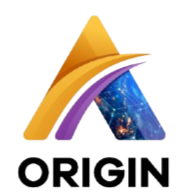
The Challenge:
It was challenging for a digital marketing company to manage its diverse portfolio of projects and distributed teams efficiently. Due to the fact that teams were spread out over different locations and worked remotely, coordination of tasks, tracking progress, and ensuring timely delivery had become increasingly difficult. Team workflows and collaboration environments required intricate project management tools that lacked the necessary features.
Communication gaps, missed deadlines, and inefficiencies resulted, ultimately affecting the company’s ability to provide its clients with high-quality products within specified deadlines.
The Solution:
We recognized that a robust project management system was urgently needed, so we collaborated with us, a renowned software development company that specializes in project management tools, to create a custom-made solution. We created a Project Management System (PMS) with the objective of streamlining the entire project life cycle, from inception to execution to monitoring and delivery.
This PMS was built with meticulous attention to specific requirements, focusing on key features essential for a successful project management process.
Comprehensive Project Planning and Scheduling:
- Project timelines, dependencies, and critical paths can be visualized using advanced Gantt charts.
- A wide variety of project templates that can be customized to suit different project types, ensuring consistency and efficiency.
- Using resource allocation tools, team members are assigned tasks based on their availability and skills.
- The integration of the calendar system will allow automatic scheduling and reminders for key milestones and deadlines.

Seamless Task Assignment and Collaboration:
- Featuring drag-and-drop functionality for easy task assignment, this task management software is simple to use.
- For efficient communication between team members, features such as chat, file sharing, and task commenting provide real-time collaboration.
- To ensure team members have access only to project information and tasks that are relevant to them, we use role-based access controls.
- Communication and productivity are enhanced with integrations with popular collaboration tools such as Slack and Microsoft Teams.
Real-time Progress Monitoring and Risk Management:
- The dashboard displays key metrics for projects, such as how they are progressing against milestones, how effectively the budget is being used, and where resources are being allocated.
- To proactively address potential issues and delays, automated tools are available to identify risk and mitigate it.
- In the event of a critical event such as a missed deadline, an overrun in the budget, or a conflict in resources, alerts and notifications are sent.
- The analysis of historical project performance is used to identify trends and improve future planning and execution of projects.

Efficient Stakeholder Engagement and Approval:
- Stakeholders will be able to review project deliverables, provide feedback, and approve revisions through a central platform.
- To track project changes and maintain a complete history of revisions, version control and audit trails are available.
- The approval workflow can be customized to accommodate the specific requirements and hierarchy of each project and stakeholder.
- A fully integrated email integration and notification system will ensure that stakeholder communication and response takes place as soon as possible.
Tech Stack:
- Angular (Front-end): A dynamic and responsive user interface was one of the reasons Angular was selected for its robust front-end framework. Through its component-based architecture, complex features, including project planning and visualization, could be seamlessly integrated, facilitating modular development and scalability.
- .NET (Back-end): With .NET, scalable, enterprise-grade applications are built with ease and reliability. In addition to providing robust back-end support, its comprehensive framework allowed seamless integration with third-party APIs, databases, and security features. In addition to accelerating development, .NET’s extensive libraries and tools ensured that the PMS performed and was stable.
- MySQL (Database): For its reliability and scalability as a relational database management system (RDBMS), MySQL was chosen. As a result of its ability to manage large amounts of data efficiently and its features such as transaction support and data integrity, it was a good choice for storing and managing project data. A further benefit of MySQL’s compatibility with .NET and ease of administration was that it made the PMS development and deployment process easier.
AI/Analytics Features:
- BI and Analytics:
- Visualization and monitoring of trends, productivity, progress, and even attrition with dashboards and reports.
- Predictive analytics allows hiring needs to be planned and targeted workers to be identified early.
- AI-Powered Tools:
- Provides a system for recommending training based on pre-screening, performance evaluations, and training recommendations.
- Chatbot:
- 24/7 virtual assistants address issues related to leave, payroll, HR policies, as well as other frequently asked questions by employees.
- Routine tasks such as leave application submissions and expense claims are also simplified.
- Custom Workflows:
- Customized workflows for approvals based on roles and organizations.
- Employee Self-Service:
- A convenient engagement portal allows employees to view pay slips, update personal information, and request leaves.
Complexity and Issue Resolution:
Developing an integrated Project Management System (PMS) posed several challenges, primarily due to the complexity of the company’s operations and the diversity of its project needs.
- Scalability: Clients manage a diverse portfolio of projects with varying scopes and complexities, so scalability of PMS was imperative to accommodate future growth. As a result of Angular’s component-based architecture and .NET’s scalable infrastructure, the development team adopted a modular approach to address this issue. The company was able to expand its operations smoothly as a result of adding new features and functionalities.
- Integration: We faced integration challenges when integrating the PMS with our existing systems and third-party tools. In order to overcome this issue, the development team used .NET’s robust integration capabilities to seamlessly integrate the PMS with other software, such as customer relationship management (CRM) and version control tools. The integration platforms were also tested and validated thoroughly to ensure that data was consistent and interoperable.
- User Experience (UX) Design: It was crucial to the success of the PMS that the interface be intuitive and user-friendly so that it catered to the diverse needs of project managers, team members, and stakeholders. As part of the development process, the team conducted extensive user research and usability testing to gather feedback and iterate on the design. By leveraging Angular’s rich UI components and responsive design features, the team developed a user-friendly interface that improved adoption and experience.
- Data Security: The sensitive nature of project-related data and the need to comply with data protection regulations made it imperative to ensure robust data security measures. In order to safeguard sensitive information stored and processed within the PMS, the development team implemented encryption protocols, access controls, and data encryption mechanisms. Regular security audits and penetration testing were conducted to identify potential vulnerabilities and address them proactively.
The challenges we faced were overcome through collaboration, innovation, and iterative development, resulting in a comprehensive PMS that can be tailored to meet the specific requirements of each individual client.
Outcomes:
The Project Management System (PMS) contributed significantly to the improvement of project delivery efficiency, team collaboration, and customer satisfaction. Our key results included:
- We were able to reduce the project delivery time by 25% as a result of improved planning, streamlined workflows, and enhanced coordination between teams.
- Increased productivity by 30% as measured by the number of tasks completed per unit of time, thanks to enhanced collaboration and communication.
- Providing high-quality products on time and engaging clients throughout the project lifecycle resulted in a 20% improvement in client satisfaction scores.
- A better ability to make decisions and allocate resources across the organization as a result of increased transparency and accountability.
Through the project management system, the client was able to optimize its project management processes, improve team performance, and consistently provide exceptional results to clients. Through the use of advanced technologies such as Angular, .NET, and MySQL, we were able to manage projects efficiently, collaboratively, and with greater client satisfaction.
